.jpg)
Reprinted from Meridian Magazine (17 Oct 2012).
©2012 by John P. Pratt. All rights Reserved.
| 1. What is the Jubilee Year? |
| 1.1 Sabbath Year |
| 1.2 Fiftieth Year |
| 1.3 Proclaim Liberty |
| 2. When is the Jubilee Year? |
| 2.1 First Witness: Moses |
| 2.2 Second Witness: Christ |
| 3. Third Witness: Jeremiah |
| 3.1 "Proclaim Liberty" |
| 3.2 After Jubilee Year |
| 3.3 Before Siege |
| 3.4 Hebrew Calendar Confirmation |
| 3.5 17 Jubilees |
| 4. Conclusion |
| Notes |
The commandment in the law of Moses to sanctify every fiftieth "jubilee year" by proclaiming liberty to slaves, forgiving debts, and having the land return to its original owner is a powerful concept in the law of Moses. But over the centuries the practice has been neglected to the extent that now the exact year in which this is to be done is not even known. My research has provided two witnesses indicating two jubilee years but the arguments have not been compelling. This article shows that Jeremiah provides a very clear witness that 589 BC was also a jubilee year, based on the traditional Hebrew calendar and what is arguably the best attested date in the history of Jerusalem at that time. This witness confirms the identification already made in my research and is strong enough that it can stand alone. Knowing one jubilee year with certainty allows all others to be easily calculated.
.jpg) |
Sabbath years (and jubilee years) were reckoned from autumn to autumn, just like the modern Hebrew year. During the sabbath year crops were not to be planted so that the ground could have a rest (Exo. 23:10-11). Apparently this commandment was not well kept because it is written that the reason for the 70-year captivity[2] in Babylon was to allow the land to rest to make up for missed sabbath years (2 Chron. 36:21).
In the sabbath year debts to fellow Israelites were to be forgiven (Deut. 15:1-3). Moreover, if one had an Israelite servant, he was to free that servant after six years of service, and provide him well with gifts as he terminated his service (Deut. 15:12-14). In this latter case, the freeing is explicitly tied to occurring after six years of service, rather than always occurring in the sabbath year.
God also commanded that seven sets of seven years also be counted (Lev. 25:8). After a set of 49 years, the next year (the 50th) was an even more sacred year called the jubilee year (Lev. 25:10).
What is often not understood is that the 50th year is also reckoned as the first year of the next set of 49.[3] Thus, there are really only 49 years in each group, with the first of each group being designated the jubilee year. The word "jubilee" can refer both to the special year, and also to the set of 49 years. In my articles, the word "jubilee" alone usually refers to a group of 49 years, beginning on a SUNDAY year and ending on a SATURDAY year. The year of celebration is called the "jubilee year". It is always a SUNDAY year.
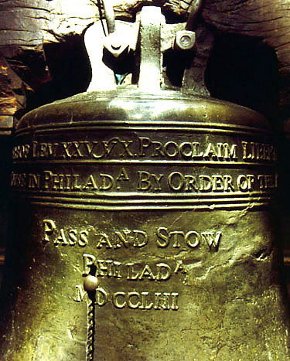 |
An interesting side note is that the Liberty Bell has the verse about proclaiming liberty on the jubilee engraved on it: "Proclaim liberty throughout all the land unto all the inhabitants thereof" (Lev. 25:10, see photo). According to one source, "The Pennsylvania Assembly ordered the Bell in 1751 to commemorate the 50-year anniversary of William Penn's 1701 Charter of Privileges".[4] Thus it was appropriate both as a jubilee celebration and as symbolizing the proclaiming of liberty.
Israel spent 70 years in captivity to Babylon, partly because of their failure to keep the sabbath year (2 Chron. 36:21). After they returned to Jerusalem, they have been very diligent in keeping track of every seventh day and also every seventh year. My research verifies that the standard Hebrew Calendar correctly identifies the sabbatical years as those which are exactly divisible by seven (with no remainder). For example, our (Gregorian) year 2008 was Hebrew year 5768 (beginning in the fall of 2007). The number 5,768 is exactly divisible by 7, so that was a sabbath year (5,768 = 7 x 824). I provide a "Calendar Spreadsheet," for easy conversion between various sacred calendars.[5]
But unfortunately the knowledge of the jubilee year has been lost. If you do an Internet search for "When is Jubilee Year" you will find that no official Hebrew sources claim to know with any certainty.
In my research, I have attempted to identify just when the jubilee year occurs and have provided two witnesses. The purpose of this article is to propose a third witness of the correctness of that identification.
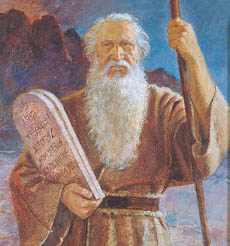 |
In my research, the date of crossing the Jordan River and entering Canaan was derived by beginning with Adam and counting forward to that year. The date proposed is Mon 12 Apr 1422 BC.[6] That year would be the first year of the jubilee count. Because the first year is also the fiftieth year of the last count, it follows that 1422 BC was a jubilee year, which was proposed in an earlier article.[7]
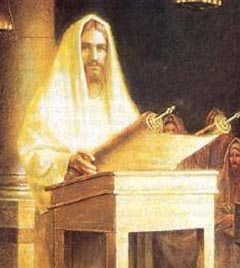 |
He then quietly added that he had come to fulfill that prophecy (Luke 4:21). Immediately his irate countrymen tried to kill him as punishment for speaking such apparent blasphemy (Luke 4:29), but he chose not to be executed at that time.
That verse he quoted from Isaiah, which includes the phrase "proclaim liberty", was such an important prophecy of Christ that it has been used to characterize Isaiah's entire ministry:
"And Isaiah, who declared by prophecy that the Redeemer was anointed to bind up the broken-hearted, to proclaim liberty to the captives, and the opening of the prison to them that were bound, were also there." (D&C 138:42).
When Jesus went to the spirit world after his crucifixion and before his resurrection, he "proclaimed liberty" to the captives in prison (D&C 138:31). So it is clear that one of the main points of the mission of Jesus Christ was to "proclaim liberty." But just how does it all tie into the jubilee year?
Anyone who attempts to identify the jubilee year should feel an implicit duty to explain just how it ties into the Promised Messiah. It is He who would proclaim liberty in the fullest sense. For those who accept Jesus Christ as that Messiah, one might expect the jubilee year to be that of his birth, of beginning his ministry, or perhaps of his resurrection. But if it plays no role at all, that would be a big red flag that an important pattern has been ignored. The Lord has promised always to provide a pattern so that we may know the truth of all things (D&C 52:14). All of my work has been based on using the patterns we have been given in order to find truth.
The sabbatical and jubilee pattern is one of the clearest for use in identifying historical dates. If all dates were given including (the pattern of) the day of the week, it would avoid many mistakes. In all my articles I attempt to follow that procedure, especially because I use our modern Gregorian calendar for all dates, rather than the Julian calendar often used by historians.
Having identified 1422 BC as the first witness of a jubilee year, it is easy to identify all other jubilee years by simply counting multiples of 49 years from that year. Counting 29 sets of 49 years makes 1421 years. Thus, the year 1 BC would also have been a jubilee year. My research has proposed that the birth of Jesus Christ occurred on the evening preceding Thu 6 Apr 1 BC. This date was not arrived at by depending on the testimony of any modern religious leaders or traditions. It was found by counting backwards from the better established date of the Resurrection on Sun 3 Apr AD 33 (Gregorian), as well as using many other sacred calendars.[8] It has already been proposed in an earlier article that Christ was born in a jubilee year in order to fulfill the symbolism of jubilee.[9]
Thus, the fact that Christ identified himself as fulfilling the promise of jubilee, along with his proposed birth date being in a jubilee year, counts as a second witness to its correctness.
 |
There is a very important field called "rhetorical analysis" which can offer much light on scripture study. The language of revelation tends to use words very carefully, and the King James translators did an excellent job of translating words into English in a very consistent fashion.
When one does a word search in the scriptures (using the King James Bible) for "proclaim* liberty", one gets eight hits. If one were to do the same search in Hebrew, all the hits in the Old Testament would be the same, showing how faithful the translation is. The first instance is in Lev. 25:10 where the jubilee year is defined. Another is Isaiah 61:1 which the Savior quoted about jubilee when he began to preach in Nazareth, as mentioned above. Two are from modern revelation in the Doctrine and Covenants also referring to jubilee, as quoted above (D&C 138:31, 42). All four of those verses refer to the jubilee year.
The other four hits are found in one chapter of the Old Testament: Jeremiah 34. Think about that. Do you find it unusual that all of the other four instances are found in a few verses of only one chapter, which does not explicitly mention jubilee? That should raise your eyebrow before we even look at them. In the entire Bible four of the six occurrences of that phrase are found in only one chapter. What is that all about?
Much of my work is based on the statistical chance of very unusual coincidences. This is an example. If one calculated the chance of so many instances of a phrase occurring in one chapter, it would be so rare that it would clearly indicate that something beyond chance was operating. So let's look at those verses.
 |
"This is the word that came unto Jeremiah from the Lord, after that the king Zedekiah had made a covenant with all the people which were at Jerusalem, to proclaim liberty unto them;
That every man should let his manservant, and every man his maidservant, being a Hebrew or a Hebrewess, go free" (Jer. 34:8-9)
Note that the "proclamation" (the word coming from "proclaim") was done by covenant. It was a very serious commitment and sacrifice. Verse 14 mentions the commandment to release such servants after six years of service and notes that it had not been observed. It is not explicitly stated that this release was due to the jubilee, and many commentators have concluded that it probably was a sabbatical year of release.
The next use of "proclaim liberty" commends them for having done right by following the law:
"And ye were now turned, and had done right in my sight, in proclaiming liberty every man to his neighbour; and ye had made a covenant before me in the house which is called by my name" (Jer. 34:15)
Whether or not the proclamation was fulfilling the law of release after seven years or a jubilee year is not explicitly stated in the text. But the fact that the Lord refers to it so often as "proclaiming liberty" is strong evidence that the covenant was made to fulfill the jubilee commandment.
Then the Lord severely chastises them for having changed their minds and recaptured their servants:
"Therefore thus saith the Lord; Ye have not hearkened unto me, in proclaiming liberty, every one to his brother, and every man to his neighbour: behold, I proclaim a liberty for you, saith the Lord, to the sword, to the pestilence, and to the famine; and I will make you to be removed into all the kingdoms of the earth." (Jer. 34:17)
So the Lord declares the he will now proclaim liberty in his own way because they failed to do it correctly. What could have been a year of liberty and rejoicing was going to become a year of doom, because of their choices! They came so close to physical salvation and then just couldn't hold on. Destruction followed soon after.
The point of looking so closely at all of those quotations is to see that it is clear that God is referring to a year of jubilee, not just a sabbath year of release. The fact that "proclaim liberty" is used four times in this chapter, referring to the release of captives, and that all four other uses in scripture refer to the jubilee year, leave little doubt that this revelation was given late in a jubilee year, or very soon afterward, when the time had passed to release the servants according to the law. Thus, by the use of rhetorical analysis we can deduce it was a jubilee year even though it is not explicitly stated.
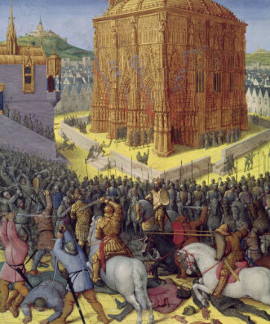 |
Counting jubilee years from the two witnesses given above, we see that 589 BC would have indeed been a jubilee year. That fits exactly with what is implied in this study. The jubilee year would have ended in the fall of 589 BC, and the prophecy of Jeremiah could have been given near that time. The timing is so perfect that it all fits to within a month or so between the end of the jubilee year and the beginning of the siege.
One confirmation of this identification of the jubilee year comes from the traditional Hebrew calendar itself. It seems very unlikely that the Hebrews have accidentally counted the seven year sabbatical cycle incorrectly. By the same token, we can thank them also for having kept such good track of the seven day weekly cycle. There is no compelling evidence that they have counted either cycle incorrectly, although the subject has been debated. Sunday today really is the same as Sunday at the time of Christ, or any other date back to the return of the Jews from their exile about 537 BC. They suffered much for not having taken these sacred cycles seriously before that time and have remembered their lesson well.
According to the Hebrew calendar, the year 590 BC was Hebrew year 3171. I leave it as an exercise for the reader to determine that 3,171 is exactly divisible by 7 (no calculators please!). Thus, 590 BC was a sabbath year, and so the following year 589 BC was a SUNDAY year (a candidate to be a jubilee year). So if any year within two or three years of 589 BC was known to be a jubilee year, then the Hebrew Calendar would say that it must have been exactly 589 BC. That is another confirmation.
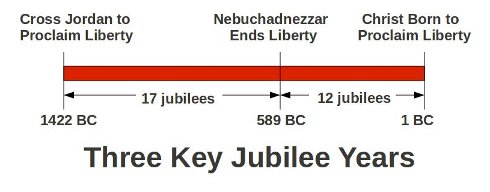 |
"Israel counted 17 Jubilees from the time they entered the land to the time they left it."[12]
That is the same number implied by this article. The quote does not explicitly say that a jubilee began when they entered, but using the word "counted" suggests that they did indeed begin counting as they entered, which is one premise of my research. Thus, my research agrees with this ancient statement.
In fact, if the words "left it" are replaced with "lost freedom," then the statement becomes true to the very year. The time during which Israel could "proclaim liberty" in the Promised Land ended just after the 17th jubilee closed (counting up until the autumn of 589 BC as completing the fiftieth year of the 17th jubilee). Within three months thereafter, their freedom vanished as Nebuchadnezzar's long siege of the city began in December, finally ending in the destruction of the city and the death or captivity of the survivors in the summer of 587 BC.
We have dates for a set of three key events, all pertaining to liberty, which are known independently from other historical records and witnesses. These were all jubilee years, and are separated by multiples of 49 years. These three witnesses together make a strong case that the correct year of the jubilee is now known with relative certainty. In fact, this third and final witness is the strongest of the three. There is still debate about the year of the Exodus, and of the birth of Christ, but there is universal agreement about the beginning of the reign of Zedekiah. Thus, this one witness alone could be considered strong enough to fix the year of the jubilee as occurring in 589 BC. With that one anchor date being certain, all other jubilee years throughout history are likewise determined.